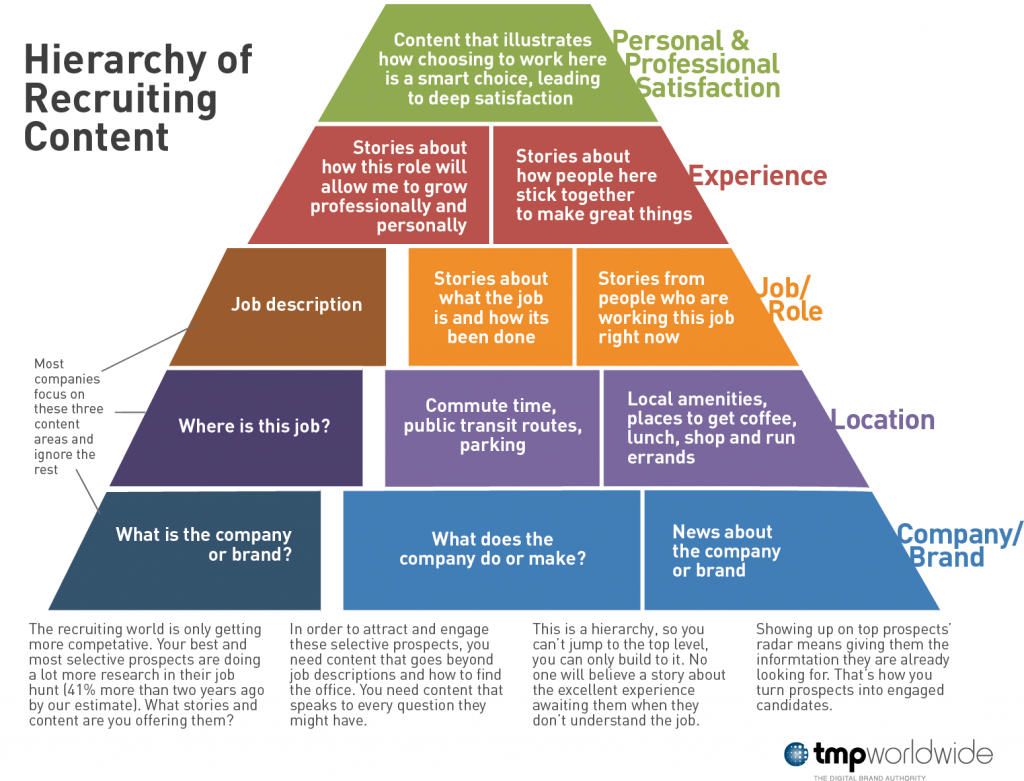It is high time recruiters understand we’ve left a few years ago the era of recruitment 1.0 to enter the recruitment 2.0. And it’s not just digital or tech-related. It also has to do with behavior and society. Interactions between the recruiter and the candidate happen to be sometimes reversed, especially when the candidate is in position of power. So recruiters need to learn how to pitch better.
A pitch by the recruiter rather than by the candidate?
Indeed, when the digital revolution occurred, recruiters simply adapted to it and kept using their logic of posting job offers on their career websites or on jobboards. Candidates were then looking for these and sending CVs to get a chance of being invited to take an interview. It means that even though the 2.0 era had began, the way recruiters proceeded was the same, except they had switched from offline to online.
Yet, behaviors are changing. Recruiters are progressively understanding that the digital revolution wasn’t only a more practical way to keep dealing with recruitments the same way as before. It is now considered as a shaker in the industry. And the whole model needs to be envisaged the other way round.
Candidates are more empowered, thanks to technology. They now have access to tons of job offers online. Hence, the job market is global now. There is a pure and perfect competition among recruiting firms. Moreover, candidates are enabled to promote themselves online and to let recruiters know who they are. This means the direction of the interaction can sometimes be reversed: recruiters contacting candidates, on Linkedin or Viadeo for example, is increasingly common. And it isn’t a one way process anymore.
So you got it. This implies having recruiters able to woo candidates and to be interviewed by them, and not the contrary. Recruiters now need to sell their “product”, meaning their job offer and the company they recruit for. This is increasingly true with the rise of the Millenials (Generation Y) and of Generation Z. These new workers aren’t afraid to ask questions and to pick among the job offers in front of them. This is why they require the recruiter to expose precisely their recruiting arguments.
And some employers have done it perfectly. They’ve adapted themselves to the new generations expectations coming along the 2.0 Era. Take Google. It ranked 1st in the World’s Most Attractive Employers 2015 (by Universum) for both Engineering and Business Schools. Why is that? In a nutshell, it is mostly because they’ve adapted to aspirations and requirements of today’s candidates.

Pitch your job offer
How can you optimize your chances of hacking talent? It’s simple. Be sure to hierarchize and go deeper in your “recruiting content”.
Take a look at the diagram TMP Worldwide made.
As rightly described above, your recruiting content addressed at potential candidates needs to go beyond pure job descriptions. This is how you’ll manage to hack talent and get the best candidates.
You need to be structured. Don’t skip steps. Recruiting content is just like a pyramid. If it lacks foundations, if will fall. Here is how you need to proceed:
#1. Talk about your company

First, explain what your firm does and what it sells. That’s obvious. Yet, recruiters often tend to forget to talk about the latest news of the entity. Show your candidates they are applying to a dynamic and successful entity. You need to make them want to join the adventure. To do that, don’t forget to allude to your corporate culture either. Candidates need to feel they are joining the best place to work.
#2. Some elements about the location

Where will the potentially new employee be working? Wall Street or a Farm in Arkansas? Pretty much the same huh? How can he/sheaccess it? How much time? Is it practical? Promote it if it is! Don’t forget to allude to the amenities there: do you have recreational spaces just like at Google? If yes, not mentioning it would be a mistake.
#3. The famous job description

You can’t escape that part. The interviewee (well who became the interviewer at this point) needs to know what you’re expecting from him/her. Have some bullet points in mind about what tasks he’d have to perform. Even better, if you really want that candidate, have a potentially future coworker join you at this point to give his vision of the job. What about organizing a tour of the company for the pre selected few? Human touch won’t fail you.
Most recruiters usually stop there. That’s pretty good but you can do better. Go deeper. Develop.
#4. Sell an experience

Talk about how this job will benefit the candidate. Talk about how he/she will create bounds with coworkers and grow both professionally and personally. Highlight achievements and challenges.
#5. The personal and professional satisfaction

End your pitch by explaining why accepting this job offer will only do him/her good. Professionally, by highlighting the compensation but also other advantages and career advancement opportunities; Personally by putting an emphasis on flexibility, corporate culture, etc.

You’re now well equipped to pitch your job offer to candidates and convince the best ones to accept it. So now, time to woo!








Leave A Comment